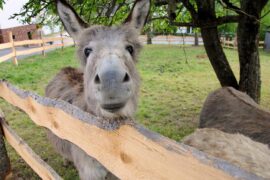Saddle donkeys are donkeys that have been trained to be saddled and ridden. Over the past few years, saddle donkeys have been growing in popularity for many reasons. They are lovable, gentle, and easy to ride once trained. In fact, with a little bit of patience and trust, training a saddle donkey can be quite a simple process. Before discussing training, let’s first talk about why saddle donkeys are becoming more popular.
Why use saddle donkeys?
There are many advantages to using saddle donkeys. Typically, their personality plays a prominent role in their charm. Donkeys are most often approachable, intelligent, loveable, and calm. One of the key reasons for using saddle donkeys instead of horses is their tendency to remain calm in most situations.
Even with adequate training, horses can be highly reactive animals. At the first sign of anything scary or new, a horse is likely to panic or go into flight mode. This behavior can look like fleeing with their rider when confronted with something unknown. There is also the risk of the horse bucking or rearing. All of which pose a significant risk for riders.
Some people may be scared of horses because of their size or because of how unpredictable they can be. Once introduced to donkeys, people will recognize their calm and sweet nature. Some may also appreciate their smaller size. Instead of being unpredictable like horses, saddle donkeys generally freeze up at frightening situations until they determine that the threat is over. Many people misconstrue this as stubbornness, but it is a fear response. By showing the donkey that there is no threat, the donkey will usually proceed and continue the journey. This behavior results in much safer rides, especially for children or people new to riding.
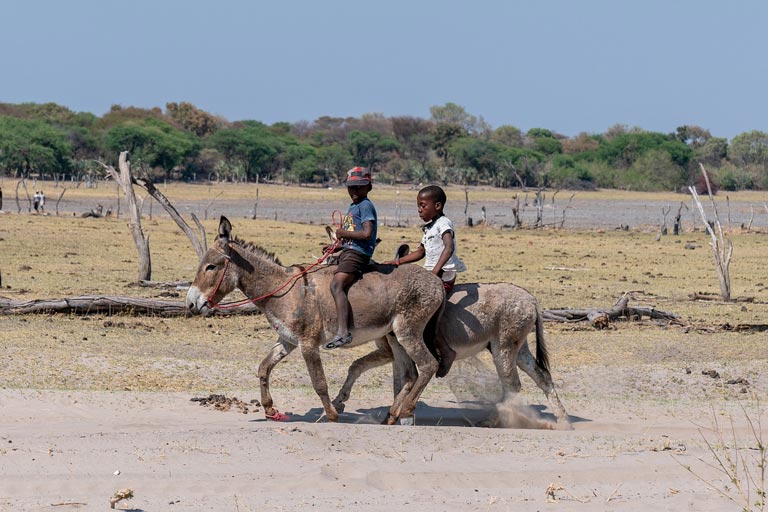
Benefits of saddle donkeys
Intelligence
A benefit of saddle donkeys is that they are highly intelligent. So long as the animal trusts its trainer, they are typically swift learners and sometimes are even easier to train than a horse. It is important to note that to teach a donkey, one must have the animals’ trust. Being overly assertive has no place in the training of a donkey as they respond far better to partnership and mutual understanding. And of course, lots of love and treats.
Cheaper to maintain
Donkeys are also cheaper to maintain since they are generally healthier and hardier than horses. They also don’t need nearly as much maintenance for their feet. Because of these reasons, donkeys typically don’t bring in as much vet bills and ferrier bills.
Saddle donkeys retain their knowledge
Saddle donkeys will never lose their knowledge once they become fully trained. If a person were to stop riding a horse for a month, the horse would be flabbergasted when the person tried to ride again. They might initially forget all their training.
On the other hand, donkeys are not of the ‘use it or lose it’ mindset. They retain their knowledge, and if their rider needs to take a break for a few months, the donkey will likely pick things back up much quicker than a horse would in similar circumstances.
Donkeys can survive in tough conditions
Donkeys can also withstand heat better than a horse, go longer without water, and are more resistant to disease than horses.
Saddle donkeys go at a slower pace
Another advantage of saddle donkeys is that they go at a slower pace than horses. This can be a good thing for those who consider using a donkey for riding. Trail rides do not need to be fast, and children learning how to ride certainly do not need to be on a fast horse. In fact, saddle donkeys are often used as therapy animals. People with disabilities are often able to use a saddle donkey to experience the joys of riding an animal.
Safe weights for saddle donkeys
Before riding a donkey, specific safety measures and precautions need consideration. As donkeys are smaller than most horses, the weight a donkey can safely carry must be accurately calculated. A generally accepted rule of thumb is that a donkey can hold between 20 and 25 percent of its body weight.
Most donkeys can easily carry kids, but it takes a mammoth donkey, the biggest type of donkey, to carry an adult. Even then, one must calculate the donkey’s weight and the human’s weight to determine if the human is within that 20-25 percent range to ensure it is safe to ride.
Saddling up and riding an American Mammoth Donkey – Video Credits: Artie Romero on YouTube
Age and fitness of saddle donkeys
Beyond measurements and weighing, there are other factors to consider when determining if a donkey is appropriate to ride. Donkeys can live up to 40 years, whereas horses average about 30 years. This fact is essential because it indicates that donkeys take longer to mature. It is of the utmost importance that riders wait until the animal is fully mature before considering riding.
You can start to train a donkey when younger, around three and four years of age. When beginning training, it must be without a rider, just going over basic commands and practicing wearing an empty saddle. Whereas horses can start carrying humans around the three to four-year mark, donkeys and their riders need to wait until year five or six.
Donkeys can also be unbalanced when out of shape or too young. For example, if a donkey is too young and hasn’t developed enough, they are more like a gangly teenager without the full strength and size of the adult. To ride a donkey in this condition would be harmful to the animal and unsafe for both the donkey and rider. Additionally, it is crucial to ensure that the saddle is fitted correctly and balanced. The rider must also be seated in the saddle correctly, as an unbalanced rider can make it even harder for a donkey to carry a person.
Some donkeys are better for riding than others
A gelding, or a male donkey that is castrated, is often considered the best option. A gelding is usually the most willing and gentle donkey and is also easy to handle, kind, and perfect for kids.
A jenny, or an adult female donkey, can be an excellent option to ride. Although, when they are in season, they can be more challenging to manage or handle, especially for small children.
Finally, jacks, or intact adult males, are typically not ridden except by the most experienced riders. Usually, they are too independent and are generally too wild.
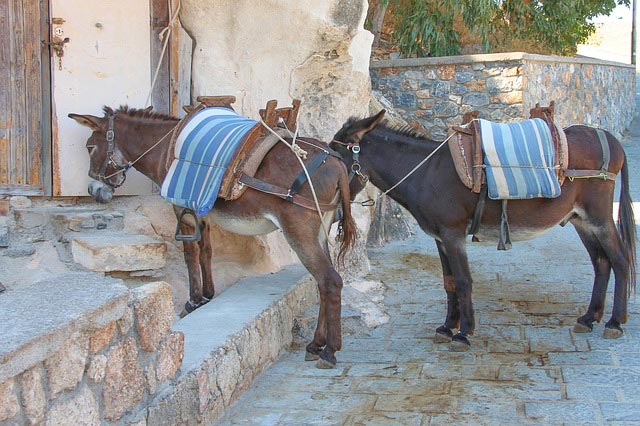
Training a saddle donkey
One of the most critical steps when training a donkey is a relatively simple step. If you haven’t already, introduce your donkey to a halter. From there, practice leading and walking with your donkey. Walking with your donkey is an essential first step as it is part of the bonding and trust-building process for a rider and the donkey.
Give the donkey time to overcome any fears it may come across during its training. Building a trusting relationship with the animal is absolutely key. Forcing the donkey to do something it does not want to do or being unkind, or inpatient would completely betray the donkey. Thus, creating even more work for yourself in the long run.
Once a trusting relationship becomes established, start slowly introducing riding equipment to the animal. Start with just the saddle pad and see how the animal reacts. Try going for a walk around the pasture while wearing the saddle pad. Keep practicing this until you and the donkey are ready to introduce the saddle.
Again, repeat the previous steps of practicing wearing it and rewarding the animal with praise and treats. Next, try securing a sack of potatoes or grain to the saddle to increase the weight and see how the donkey reacts. If this goes well, continue increasing weight while closely monitoring the donkey’s behaviors.
Monitoring the donkey’s behavior is incredibly important. Though one of the benefits of donkeys is that they are not as fussy or as difficult as horses, they are far more stoic and far less likely to show signs of pain. For this reason, it is important to watch closely for small cues that may indicate the donkey is in pain or uncomfortable.
After introducing the saddle pad and the saddle, try introducing the bridle. Repeat the previous steps of practicing walking and monitoring the animal’s behavior. When you think it may be time to introduce your donkey to a rider, go slow and give them time. Only ride or even sit in the saddle for small increments of time before getting off and praising and rewarding your donkey. Bit by bit, and as the donkey tolerates, you can increase the time spent in the saddle, and the distance walked.
Clicker training a saddle donkey
One of the best ways to train a donkey is through the use of a clicker. For those who haven’t seen one before, a clicker is a handheld plastic box with a small metal strip inside of it. You’ll hear a two-note click when you use your finger to push the metal strip down.

Clickers provide a form of operant conditioning that helps train animals—commonly used for dog training and marine mammals at zoos. The sound a clicker makes is a way to tell the donkey, “Yes, good job!” immediately after they display the desired behavior. Clickers are typically used in conjunction with treats to reinforce good behavior. Clickers not only reinforces good behavior, but it also helps the donkey to remember what it is being taught.
Donkeys truly can be taught just about anything. They can learn tricks and learn to dance by picking up their feet and moving in certain formations. Donkeys even participate in dressage where grace and elegance are required.
Training terminologies
When clicker training or learning how to train a donkey, you will encounter different terminologies. Below are some important terms to know when training a donkey.
Event marker
An event marker is a term used for using the clicker to mark good or correct behavior at the exact moment it occurs.
Free shaping
Free shaping consists of waiting until the donkey does a behavior you want to encourage and quickly rewarding him. In this case, you aren’t telling the donkey what to do, but just simply encouraging him to do the thing you want to be done by rewarding him when he does it.
Molding
Another method for training a saddle donkey is called molding. Molding is a bit more hands-on than free shaping. For example, if you want to teach your donkey to stomp his front left foot on the ground, you would grab the foot and place it on the ground and immediately click and reward. Eventually, the animal will realize that he can do what you are asking without your help and will do the action on his own for the reward.
Negative reinforcement
On the other hand, negative reinforcement does not require a clicker. Of course, never hurt or scare your donkey, as this will cause them to lose their trust in you. However, suppose a donkey is exhibiting a bad behavior like pushing at your treat pouch looking for a reward without earning it. In that case, you can try turning your back on the animal or walking away for a period of time. In this scenario, the donkey will eventually learn that he doesn’t accomplish anything by displaying that behavior.
Challenges
A common challenge to using saddle donkeys is that it can be rather difficult to find the appropriate equipment. They are unable to use horse saddles. Doing so could cause extreme discomfort and injury for the animal. Due to their wider backs, donkeys must have specially designed saddles. While horse saddles are plentiful, it can be a little harder to find donkey saddles though some feed and tack stores and some online retailers do sell them. Even still, it is best to take measurements of your donkey and compare them to the saddle to ensure the best fit.
Conclusion
In conclusion, there are countless reasons to use a saddle donkey. From their sweet and calm disposition to their intelligence and even their mischievous humor and personalities, saddle donkeys are an excellent choice to ride. Once a trusting relationship and partnership form, a donkey’s love for its rider knows no bounds. They are even known for giving hugs to their rider. A hug from a donkey looks like a donkey leaning into the person’s body and then resting its head on the person’s shoulder. While donkeys may only have one speed, they are calm and never skittish, making them popular among many riders.
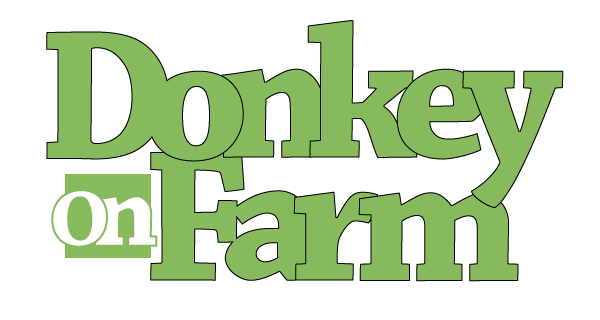


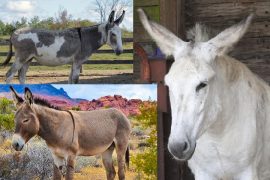
![Should Donkeys Be Stabled at Night? [With Alternatives to a Stable] Should-donkeys-be-stabled-at-night](https://donkeyonfarm.com/wp-content/uploads/2023/04/Should-donkeys-be-stabled-at-night-270x180.jpg)
![How Much Can Donkeys Carry? [Avoid Burdening] How-much-can-donkeys-carry](https://donkeyonfarm.com/wp-content/uploads/2022/04/How-much-can-donkeys-carry-270x180.jpg)
